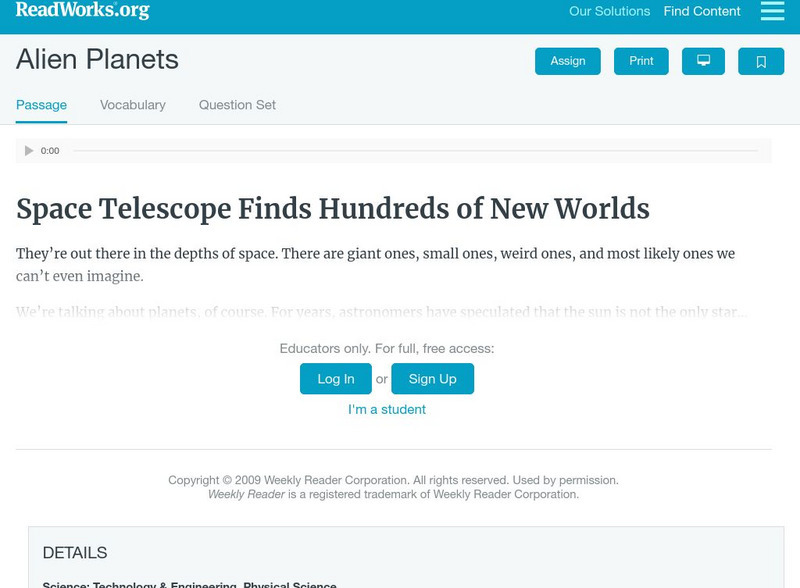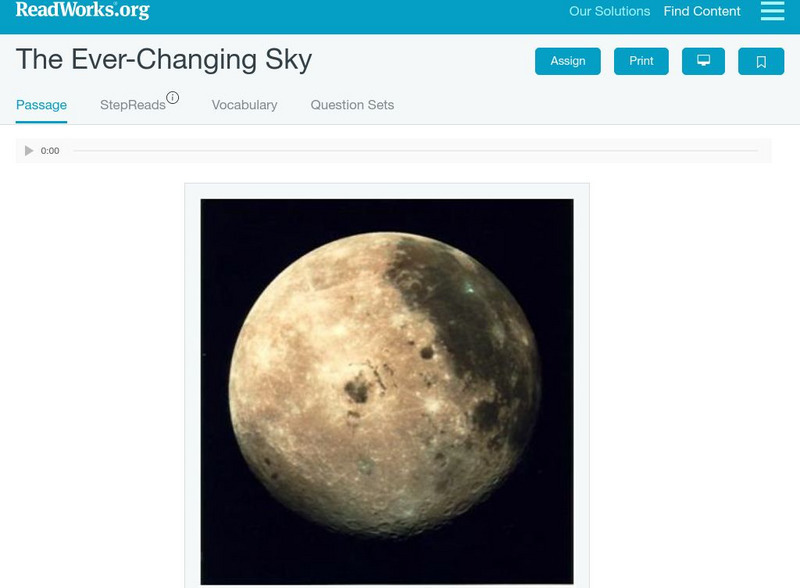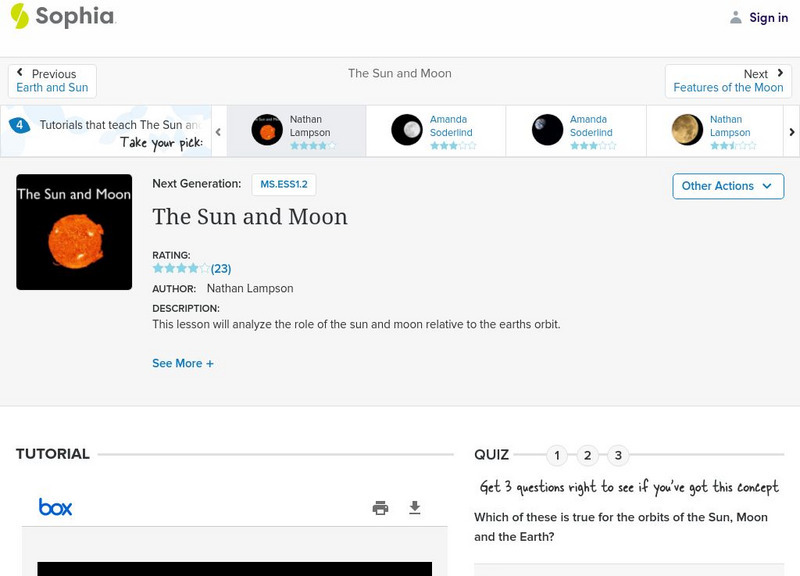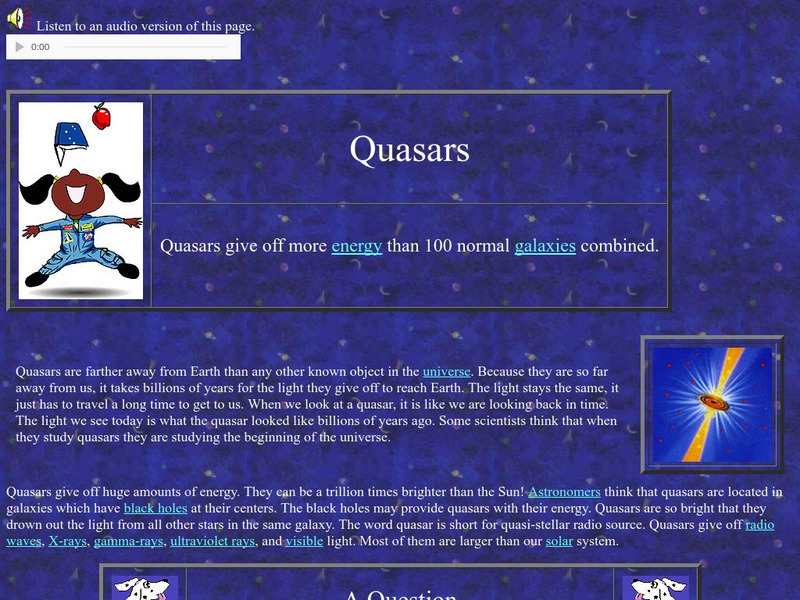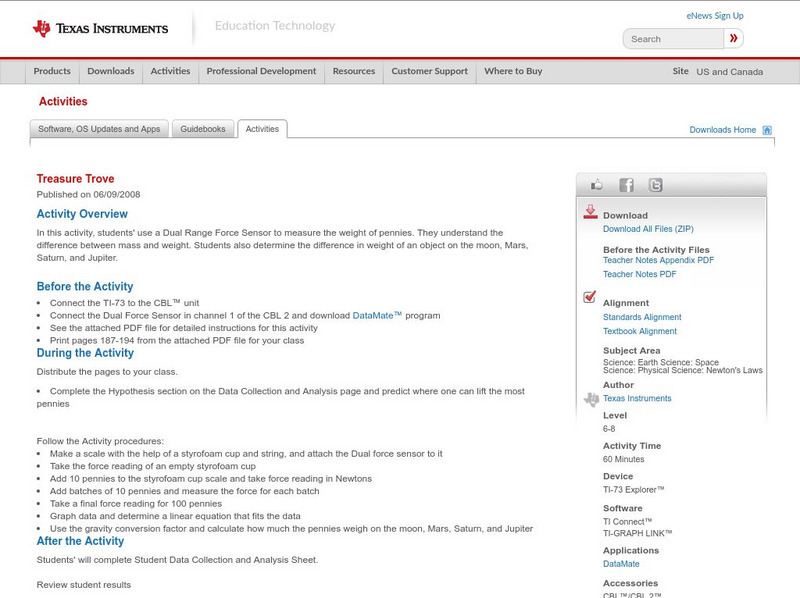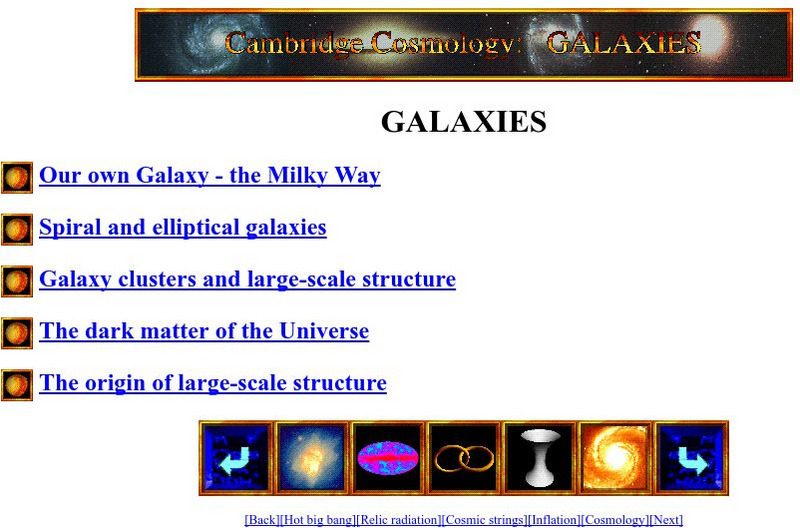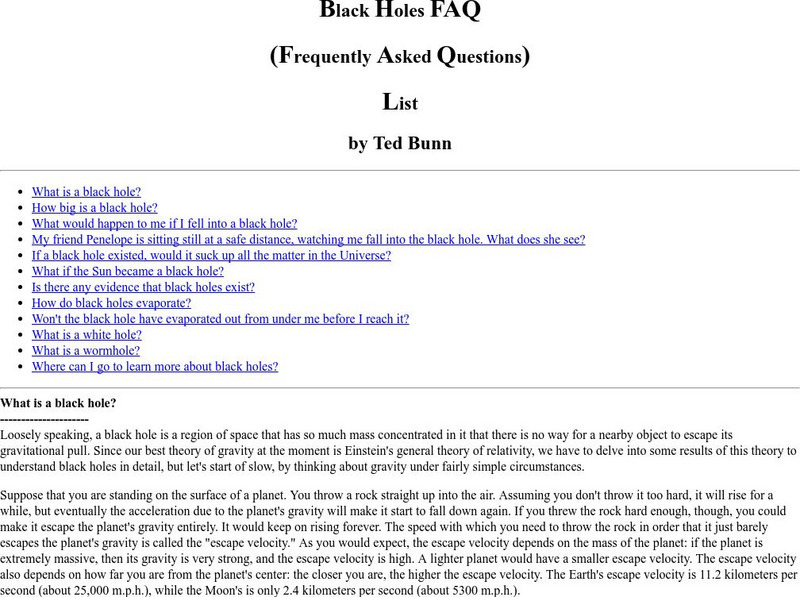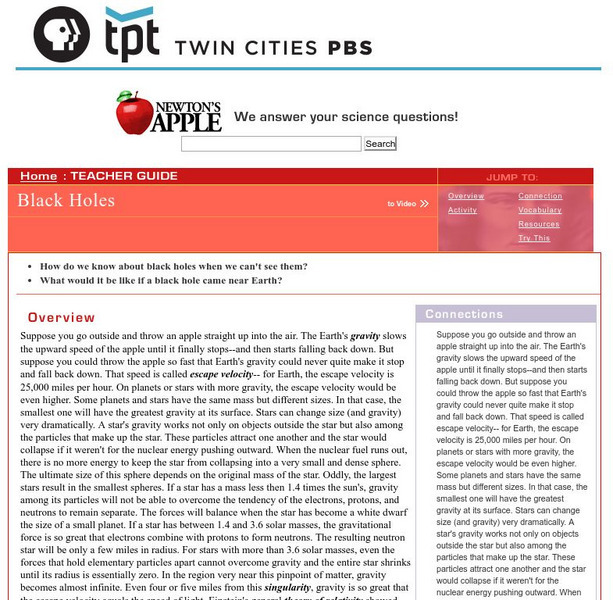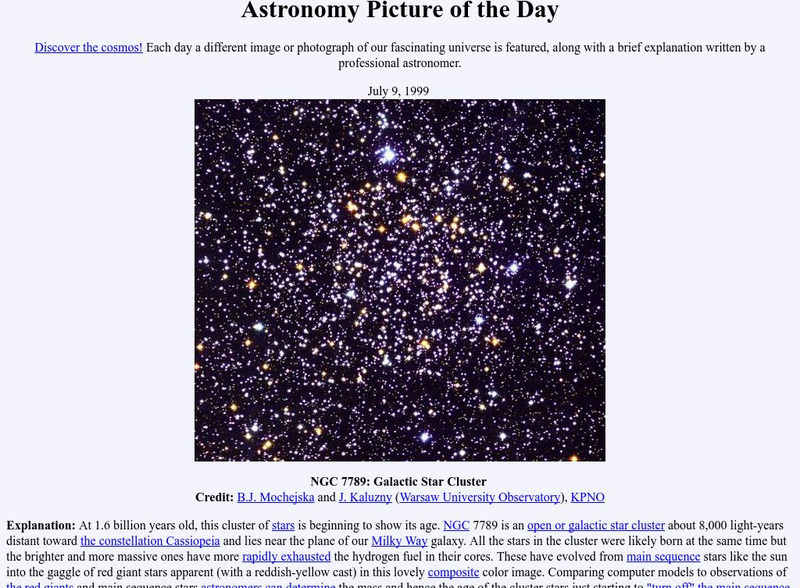Nine Planets
The Nine Planets: Europa
View pictures and links to more information about Jupiter's moon Europa. Links are also provided throughout for additional information on related subjects.
University of Oxford (UK)
Mhs/oxford Virtual Science Walk/halley's House
A description of the home of Edmond Halley with some biographical details. Includes details of his life as Astronomer Royal.
Space Telescope Science Institute
Hubble Site: Hubble Monitors Weather
This site is from Hubblesite which is provided by the National Aeronautics and Space Administration. "What's the weather for Mars and Venus? The Hubble telescope has given astronomers a peak." Site provides images, video as well as...
Read Works
Read Works: Alien Planets
[Free Registration/Login Required] This nonfiction piece discusses the discovery of previously unknown planets in the solar system. This passage is a stand-alone curricular piece that reinforces essential reading skills and strategies...
Read Works
Read Works: The Ever Changing Sky
[Free Registration/Login Required] This informational text passage shares observable aspects of the sun and the moon. This passage is a stand-alone curricular piece that reinforces essential reading skills and strategies and establishes...
CK-12 Foundation
Ck 12: Earth Science: Revolutions of Earth
[Free Registration/Login may be required to access all resource tools.] How objects in the solar system orbit around each other.
CK-12 Foundation
Ck 12: Plix: Branches of Earth Science
[Free Registration/Login Required] An interactive concept map that shows how the different branches of earth science. After completing the concept map, students can test their knowledge with a "challenge me" quiz.
NASA
Nasa: Mission: Science: Electromagnetic Spectrum: Infrared Waves
Infrared light lies between the visible and microwave portions of the electromagnetic spectrum. Infrared light has a range of wavelengths, just like visible light has wavelengths that range from red light to violet.
Can Teach
Can Teach Lesson Plan: Graphing Constellations
For this lesson plan, students practice their graphing skills by following directions to recreate constellations.
Sophia Learning
Sophia: The Sun and Moon
An expertly illustrated presentation which highlights the sun and moon, and their relationship to the Earth.
NASA
Nasa Star Child: Galaxies
This resource has two levels: one for younger viewers and one for older viewers. It surveys the basic galaxy types and provides details.
NASA
Nasa Star Child: Nicolaus Copernicus (Level 1)
Part of a NASA site for younger children, this site contains a short biography of Copernicus with hyperlinks to terms. Printable version available.
NASA
Nasa Star Child: Quasars (Level 1)
Learn why quasars are the brightest things in the universe. Vocabulary words linked to a glossary of terms and a printable version are available.
NASA
Nasa Star Child: Comets (Level 1)
Younger students learn why comets race through the sky as well as related vocabulary words and meanings.
Other
Starry Skies: How Do Fossils Form?
Directions and materials needed to make a modern day fossil.
A&E Television
History.com: The Space Race: Interactive Universe
A virtual journey through space offers photos and facts about Earth and its neighboring planets, comets, other celestial bodies of the Solar System, and the Milky Way and Andromeda galaxies.
Texas Instruments
Texas Instruments: Treasure Trove
In this activity, students use a Dual Range Force Sensor to measure the weight of pennies. They understand the difference between mass and weight. Students also determine the difference in weight of an object on the moon, Mars, Saturn,...
Other
University of Cambridge Cosmology: Galaxies
This site from the University of Cambridge allows you to view information on spiral, elliptical, and Milky Way galaxies, as well as galaxy clusters. Provides basic facts about each one.
Space Telescope Science Institute
Amazing Space: No Escape: The Truth About Black Holes
This site is for teachers or anyone interested in detailed information on black holes. Lesson plans are included as well as a grab bag of web images. Students have a chance to write and submit a paper on black holes and to explore the...
University of California
University of California Berkeley: Black Holes Faq
A detailed list of questions and answers concerning black holes that defines black holes and describes their basic physics and characteristics.
Space Telescope Science Institute
Hubblesite: Hubble Finds a New Black Hole
From NASA's Hubblesite, photographs of a black hole taken with the Hubble telescope. Includes explanatory press release.
PBS
Newton's Apple: Black Holes
This site from Twin Cities Public Television contains great information from a program called "Newton's Apple" concerning black holes. Contains activities for viewers to try to emphasize points related to black holes. Topics include:...
NASA
Nasa: Imagine the Universe: Black Holes
Resource introduces black holes at two different levels. Take a journey through a black hole, discover what a wormhole is, and discover how we know black holes are there. Includes a quiz on the information presented.
NASA
Nasa: Astronomy Picture of the Day: Giant Stars
Image of a group of red giant stars are seen in an image from the edge of the plane of the Milky Way. The evolution of these stars is explained. Many embedded links contained in the text to related topics.





